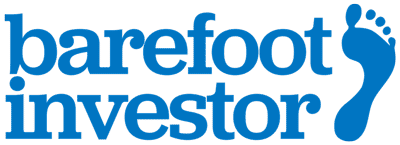How to turn $1 into $930,550
Faults in the Vault
Peter was in strife with his wife.
I knew this because she emailed me for advice using the headline ‘My Husband Is an Idiot’.
A few years ago, Peter, in his mid-forties, opened a Self Managed Super Fund (SMSF) with his wife, and invested the lot in gold. Today they’ve lost about $35,000, and his wife — a nurse, who dutifully transferred out of a low-cost industry fund — is livid.
So I called them up, and managed to speak to them together.
This week the gold price touched six year lows. Peter, however, was having none of it: “The US Federal Reserve is printing too many dollars. The entire financial system is one giant Ponzi scheme, built on the back of fiat [paper] money. When it collapses, people will revert back to the one true store of wealth: gold.”
“He subscribes to this stupid email newsletter that talks endlessly about impending economic Armageddon …”, says his wife.
“… and they correctly picked the Global Financial Crisis”, Peter interjects.
Being the marital umpire, I gave Peter a penalty: a quick search of the interwebs suggested that his newsletter gurus had been warning about a crash for years (and, just like a busted clock, they were bound to be right — eventually).
Should You Buy Gold?
When you see a gold bar in person, it’s easy to see why it’s transfixed people throughout time — and I’ve seen more gold in the flesh than most people.
In 2012, I travelled 24 metres below the streets of Manhattan and eyeballed what is reportedly the world’s largest storehouse of gold: the New York Federal Reserve’s vault — home to 530,000 gold bars.
Throughout history in times of economic upheaval, gold has been the storehouse of wealth
… yet the truth is, it’s also been a terrible investment.
Famed Wharton finance Professor Jeremy Siegel keeps long-term (inflation-adjusted) returns of various asset classes, dating all the way back to January 1802.
He found that if you put one US dollar under your bed in 1802, it’s purchasing power would have been eroded to just 5 cents by December 2013.
What about if you’d invested that dollar in gold?
The Professor says it would be worth $3.21 today.
What if you’d invested that dollar into the share market?
It would have compounded to a staggering $930,550.
It makes sense when you think about it. Other than looking pretty, gold doesn’t actually produce anything. You can’t rent it out, and it pays no dividend. There is no compounding.
The only way you can make money is by getting someone to pay more for it than you did.Stocks, on the other hand, are a collection of the businesses that compete to sell us our Model T Fords, our iPhones and our Big Macs. And over the past 200 years, it’s been a wildly successful ride: we’ve gone from horses and carts, to flying through the air, to walking on the moon.
In his book Abundance, Peter Diamandis reveals that in the past century the average lifespan has doubled, while the average income has tripled. At the same time, food is 10 times cheaper, electricity is 20 times cheaper, transport is 100 times cheaper, and communications are 1,000 times cheaper.
And Moore’s law — that computing power doubles every 18 months — is bringing us advancements like a supercomputer in our pockets (connected to billions of people), 3-D printing (which makes violins and blood vessels), and cars that drive themselves. And remember, this has all happened against a backdrop of world wars, recessions, depressions, and Right Said Fred.
I don’t know about you, but I get the feeling that this is truly an exciting time to be alive.
How to Go For Gold
The bottom line is that you really don’t want to sit on the sidelines as society advances: as Siegal’s research shows, over the very (very) long-term, there’s a fortune to be made. —
How?
Well, not by trying pick the next Facebook, Google or Apple.
History shows that it’s very difficult to pick game-changing businesses out of the gates.
Besides, some of the most innovative companies that push humanity forward aren’t the best investments — case in point, the airline industry.
Yet there is a cheap, simple no-brainer way to ride the coming revolution: just buy a low-cost, tax-efficient index fund that tracks the 500 largest companies in America — otherwise known as the S&P 500.
As new businesses emerge and grow in value, they’re added to the portfolio (read: Facebook), in the same way that as existing stocks drop off (read: Kodak), they’re deleted.
A few years ago, Warren Buffett (who famously views gold as a ‘stupid investment’), announced in his will that, on his death, 90 per cent of his wealth is to be invested in an S&P 500 index fund for his wife.
Happy wife, happy life, Peter.
Tread Your Own Path!
